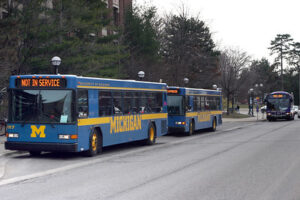While economic recessions are not welcome events, they’re also not bad for community colleges. Typical recessions drive enrollment higher as displaced workers retrain, and high school graduates wait out diminished job prospects. This particular recession will have a negative impact on occupational education. Community colleges should prepare aggressive recruiting campaigns to restart their occupational education programs as the pandemic wanes.
The current recession hasn’t been good to anyone, but some workers – notably those who can work from home – have weathered this storm fairly well. The pandemic has primarily disrupted the steady employment of certain low-wage earners and those that cannot work from home. Economists worry about the long-term outlook for many industries that rely on these workers. Food service and hospitality, brick-and-mortar retail, and entertainment-related industries may never fully recover from COVID-19.
Unemployment is one of the traditional drivers of community college enrollment during a recession. Using October unemployment data, the national seasonally adjusted unemployment rate was 6.9%. Michigan’s preliminary October unemployment rate was 5.5%. That’s far lower than April 2020, when the state’s unemployment rate was nearly 23%. As a point of comparison, Michigan’s unemployment trough was 14.4% during the 3rd quarter of 2009. It reached 16% in 4th quarter of 1982. The state’s jobless rate has rebounded relatively quickly as businesses have figured out ways to compensate for COVID-19.
Declining unemployment works against occupational education
Right now, the 5.5% unemployment rate is not high enough to drive community college enrollment by itself. Many students in transfer and non-occupational programs can still enroll in classes with few problems. Right now, occupational education programs are not attractive. In-person instruction carries the risk of COVID-19 exposure for both students and staff. Minimizing that risk has meant making unpalatable compromises. And some students who might have otherwise enrolled in occupational education programs right out of high school are staying home or taking whatever non-skilled jobs they can find.
Newly released data from the National Clearinghouse for Educational Statistic (NCES) show that male enrollment in community college classes has decreased significantly this fall. Black males represent the largest single cohort of “missing” students, but male enrollment along all racial and ethnic groups has slipped.
This is particularly bad news, and it is the closest thing that community colleges are going to get to a “call-to-action.” Male students (regardless of race or ethnicity) comprise a large portion of enrollment in certain occupational programs. While some people kindly refer to 2020 as a “gap year” for these students, it is not. A gap year implies a planned, purposeful delay to the start of an educational program. The young men who didn’t enroll for the first time in fall 2020 or who left school without enrolling will find it difficult to return to the classroom.
Pandemic timing worked against community colleges
One theory about why the number of first-time students declined blames the timing of the pandemic. The pandemic hit this area in earnest in mid-March, just as students were making their final college preparation plans. While high-achieving high school students begin these plans in their junior year, many average students wait until their senior year to develop their post-graduation strategies. They also rely more heavily on teachers and guidance counselors who may encourage these students to explore educational options (like occupational education programs) at their local community college.
The pandemic neatly severed this vital communication, leaving many students unsure of what to do or how to proceed. These same students may lack sufficient technical skills and access to the resources they need to succeed in online classes. They may not know how to apply for financial aid.
Worse, unemployment in Michigan peaked in the spring. These students may have felt the need to enter the workforce to support themselves or help support their households immediately after graduation. Once established in the workforce, there may be little incentive for them to return to school.
Their absence will be felt in certain occupations for years. The skilled trades have already seen sharp declines in the number of replacement workers as their oldest workers approach retirement age. The pandemic will further reduce the number of replacement workers in training if community colleges don’t adopt aggressive recruitment strategies to locate prospective students. Partnering with trade associations would be one way to maximize the benefit of the Futures for Frontliners program.
On the plus side, this provides yet another opportunity to increase WCC’s enrollment.
Photo Credit: Miss Wetzel’s Art Class , via Flickr



























